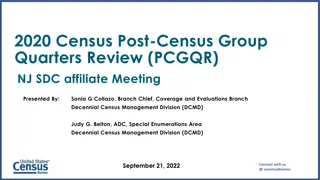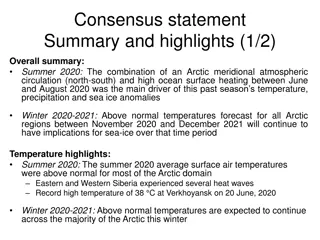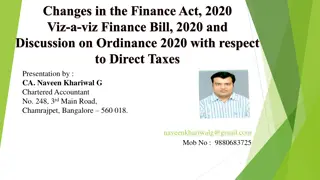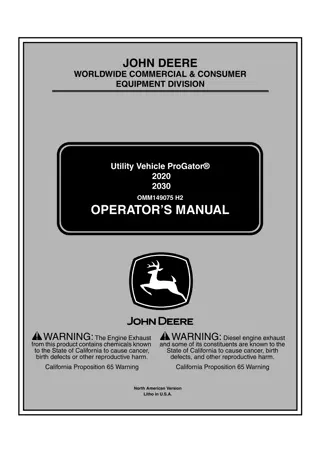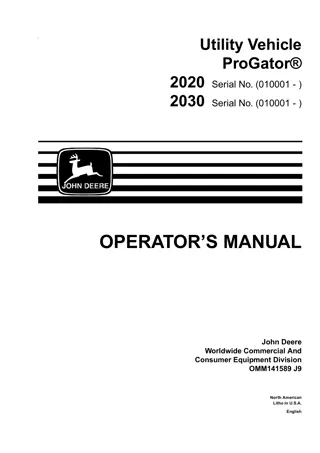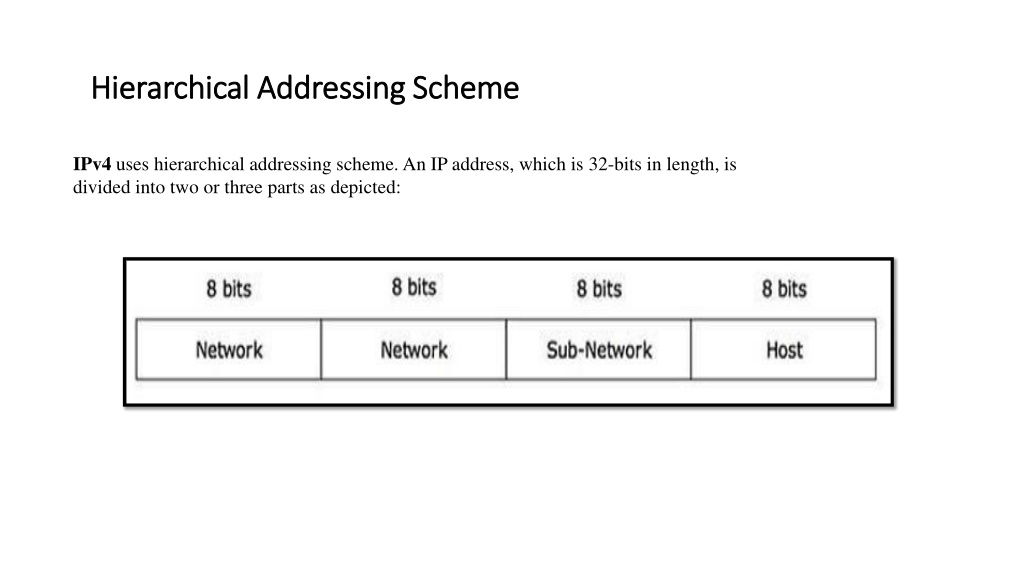
Understanding IPv4 Addressing Scheme and Classes
Learn about IPv4 hierarchical addressing scheme, subnet mask, and classes such as Class A, B, C, D, and E. Understand how IP addresses are structured, subnetting, and the characteristics of each address class.
Download Presentation

Please find below an Image/Link to download the presentation.
The content on the website is provided AS IS for your information and personal use only. It may not be sold, licensed, or shared on other websites without obtaining consent from the author. If you encounter any issues during the download, it is possible that the publisher has removed the file from their server.
You are allowed to download the files provided on this website for personal or commercial use, subject to the condition that they are used lawfully. All files are the property of their respective owners.
The content on the website is provided AS IS for your information and personal use only. It may not be sold, licensed, or shared on other websites without obtaining consent from the author.
E N D
Presentation Transcript
Hierarchical Addressing Scheme Hierarchical Addressing Scheme IPv4 uses hierarchical addressing scheme. An IP address, which is 32-bits in length, is divided into two or three parts as depicted:
Subnet Mask Subnet Mask The 32-bit IP address contains information about the host and its network. It is very necessary to distinguish both. For this, routers use Subnet Mask, which is as long as the size of the network address in the IP address. Subnet Mask is also 32 bits long. The result yields the Network address. For example, say the IP Address is 192.168.1.152 and the Subnet Mask is 255.255.255.0 then:
The number of networks and the number of hosts per class can be derived by this formula:
1- ClassAAddress The first bit of the first octet is always set to 0 (zero). Thus the first octet ranges from 1 127, i.e. 2- Class BAddress An IP address which belongs to class B has the first two bits in the first octet set to 10, i.e. Class B IP Addresses range from 128.0.x.x to 191.255.x.x. The default subnet mask for Class B is 255.255.x.x. Class B has 16384 (214) Network addresses and 65534 (216-2) Host addresses. Class B IP address format is: 10NNNNNN.NNNNNNNN.HHHHHHHH.HHHHHHHH
Class CAddress The first octet of Class C IP address has its first 3 bits set to 110, that is: Class C IP addresses range from 192.0.0.x to 223.255.255.x. The default subnet mask for Class C is 255.255.255.x. Class C gives 2097152 (221) Network addresses and 254 (28-2) Host addresses. Class C IP address format is: 110NNNNN.NNNNNNNN.NNNNNNNN.HHHHHHHH
Class DAddress Very first four bits of the first octet in Class D IP addresses are set to 1110, giving a range of: Class D has IP address rage from 224.0.0.0 to 239.255.255.255. Class D is reserved for Multicasting. In multicasting data is not destined for a particular host, that is why there is no need to extract host address from the IP address, and Class D does not have any subnet mask.
Class EAddress This IP Class is reserved for experimental purposes only for R&D or Study. IP addresses in this class ranges from 240.0.0.0 to 255.255.255.254. Like Class D, this class too is not equipped with any subnet mask.
END LECTURE END LECTURE

